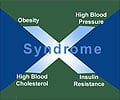
The new tattoo-based solid-contact ion-selective electrode (ISE) is made using standard screen printing techniques and commercially available transfer tattoo paper, the same kind of paper that usually carries tattoos of Spiderman or Disney princesses. In the case of the sensor, the "eyes" function as the working and reference electrodes, and the "ears" are contacts for a measurement device to connect to.
Vinci Hung, a PhD candidate in the Department of Physical and Environmental Sciences at UTSC, contributed to the work while in the lab of Joseph Wang, a distinguished professor at the University of California San Diego. She worked there for six months earlier this year under the Michael Smith Foreign Study supplement from NSERC.
She worked directly with Wang, who is well-known for his innovations in the field of nanoengineering and is a pioneer in biosensor technology.
The sensor she helped make can detect changes in the skin's pH levels in response to metabolic stress from exertion. Similar devices, called ion-selective electrodes (ISEs), are already used by medical researchers and athletic trainers. They can give clues to underlying metabolic diseases such as Addison's disease, or simply signal whether an athlete is fatigued or dehydrated during training. The devices are also useful in the cosmetics industry for monitoring skin secretions.
But existing devices can be bulky, or hard to keep adhered to sweating skin. The new tattoo-based sensor stayed in place during tests, and continued to work even when the people wearing them were exercising and sweating extensively. The tattoos were applied in a similar way to regular transfer tattoos, right down to using a paper towel soaked in warm water to remove the base paper.
Advertisement
By using different sensing materials, the tattoos can also be modified to detect other components of sweat, such as sodium, potassium or magnesium, all of which are of potential interest to researchers in medicine and cosmetology.
Advertisement
An article describing the work has been accepted for publication in the Royal Society of Chemistry's journal, Analyst.
Source-ANI










